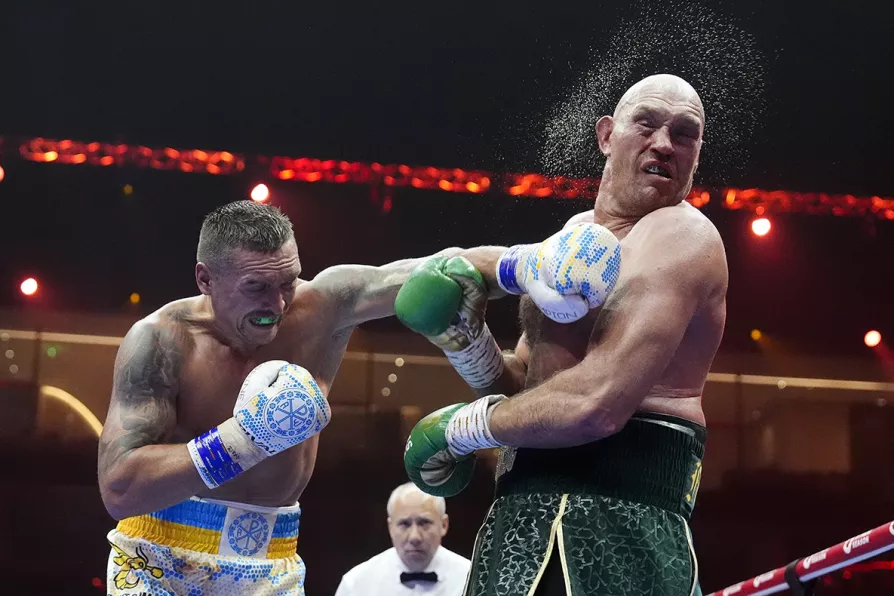JAMES NALTON on Munyua’s stinging success at the World Darts Championship
The history behind Soviet-style boxing
Not only did this school of fighting create champions in Eastern Europe, it influenced boxers across the entire world, explains JOHN WIGHT

 kapow: Oleksandr Usyk (left) lands a punch on Tyson Fury during ninth round of the Heavyweight Championship fight in Riyadh, May 18, 2024
kapow: Oleksandr Usyk (left) lands a punch on Tyson Fury during ninth round of the Heavyweight Championship fight in Riyadh, May 18, 2024
THE SOVIET school/style of boxing — think Bivol, think Usyk, think Golovkin, think Kovalev, and think the Klitschko brothers — traces its roots to the famed boxing schools of the now non-existent communist state.
These were the breeding grounds for the development of the tactical acumen and technical precision within a fighter’s armoury.
It was devised as a response to the challenges posed by opponents, rather than the reliance on sheer personal toughness and determination.
Similar stories

JOHN WIGHT writes on legendary boxing trainer and philosopher, Cus D’Amato

JOHN WIGHT tells the story of boxer Cuthbert Taylor, who was deemed ‘not white enough’ to be British champion, and how a Welsh theatre group have chosen to keep his name alive

Brit loses title showdown against Ukraine’s Usyk by unanimous decision at weekend











